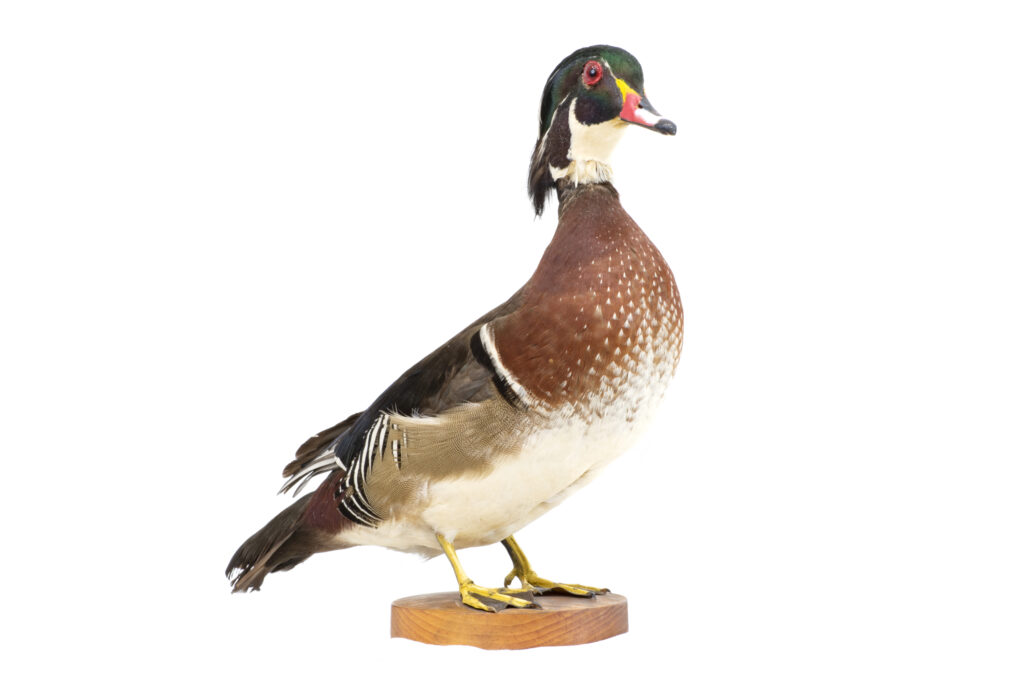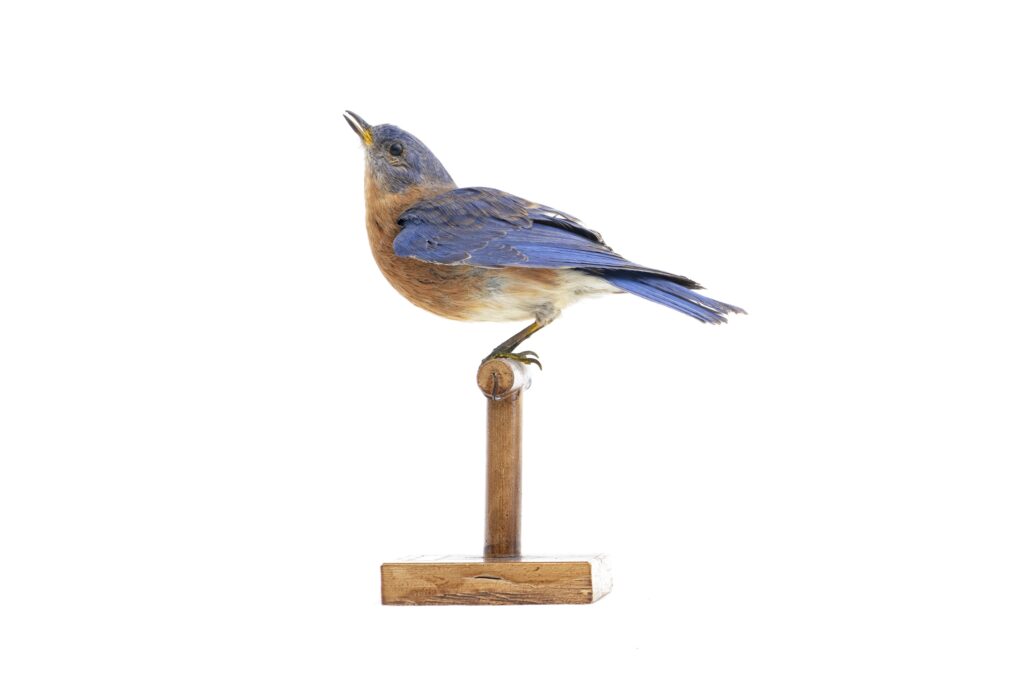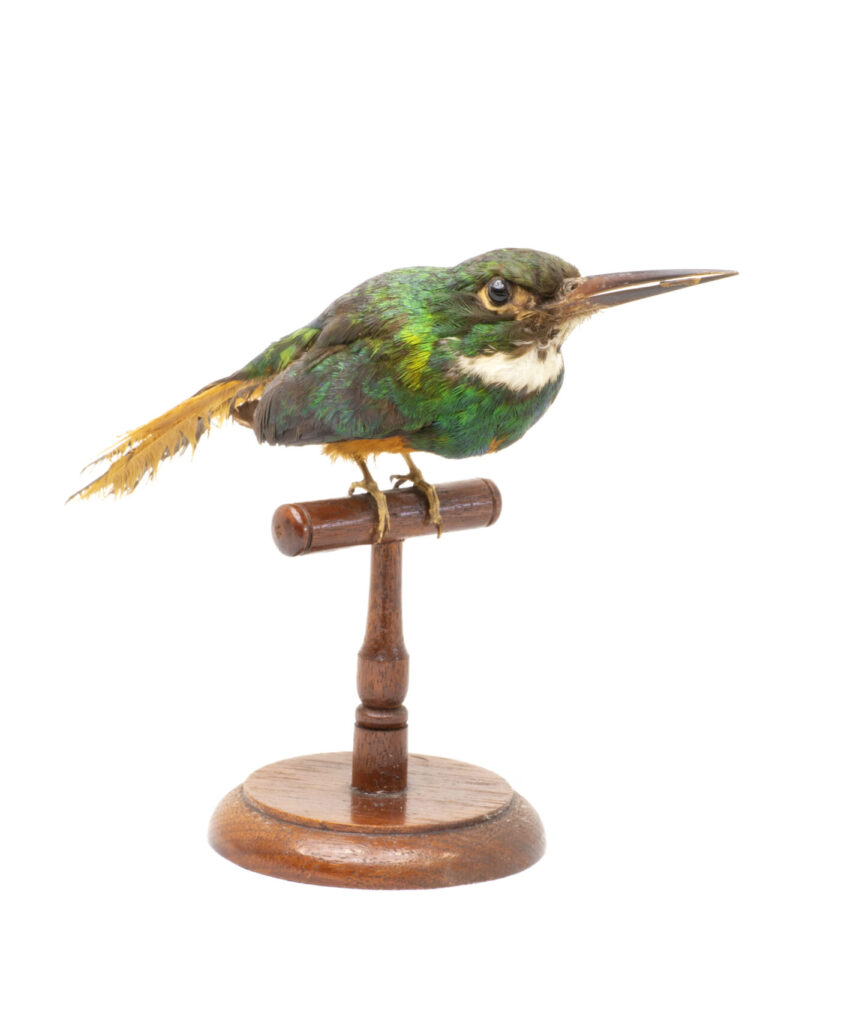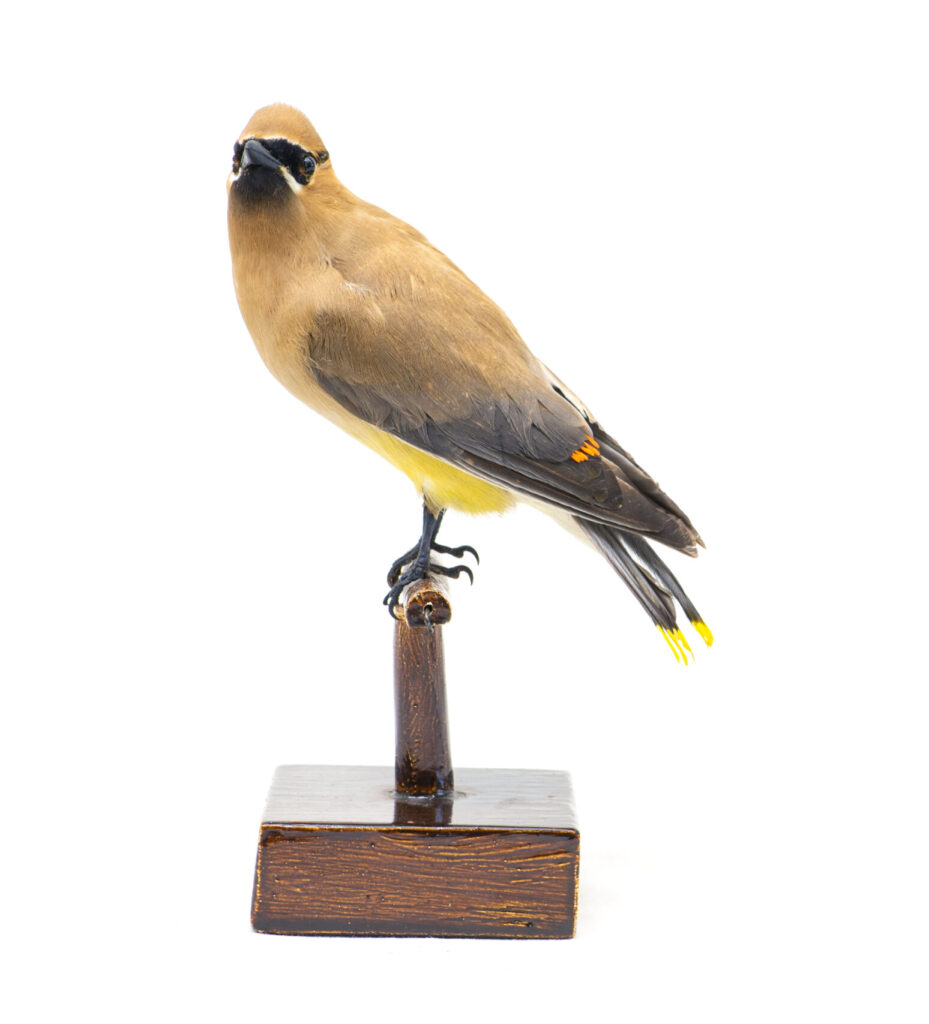

In the 1930’s hundreds of stuffed birds were taken from the Wesleyan Museum in Judd Hall and crammed helter-skelter into glass faced cabinets in the second floor hallway of Shanklin. In 2017, a project was started to rescue, restore and recognize this extensive historical collection. It turned out that not all the birds made it into the cases in Shanklin. The call went out, and from obscure store rooms, professors’ labs and offices, birds emerged. Standing on high shelves, crowded in hidden cupboards, these taxidermy specimens remained preserved on their perches, in lifelike poses, their glass eyes looking attentively outwards.

They have lived in obscurity a long time. Many are quite bedraggled and sad, but in the past few years an expert at the Yale Peabody Museum has helped restore them- replacing fallen wings or tails and returning color to feathers, beaks and feet. Along with physically stabilizing this collection, we also began the task of stabilizing them digitally in a searchable data base. Now our birds are mostly all labelled and accounted for, with information not only on their scientific families but on their historical ones – who collected and mounted and donated them to our museum.
One prolific donor was the museum’s first curator, George Brown Goode, who apart from being a renowned ichthyologist had a clear interest in birds. Another was Simeon Shurtleff, whose huge collection made up the backbone of Wesleyan’s museum when it was purchased in 1868. Also, Charles H. Neff, a naturalist in the Cromwell and Portland area who preserved birds not just in the physical taxidermy specimens but also in his lovely descriptions of them recorded in his field notebook. Now, with some still yet to be identified, our birds are mostly congregated in rooms 304 and 301, to be photographed and perhaps put into exhibits, waiting for their time in the sun.
